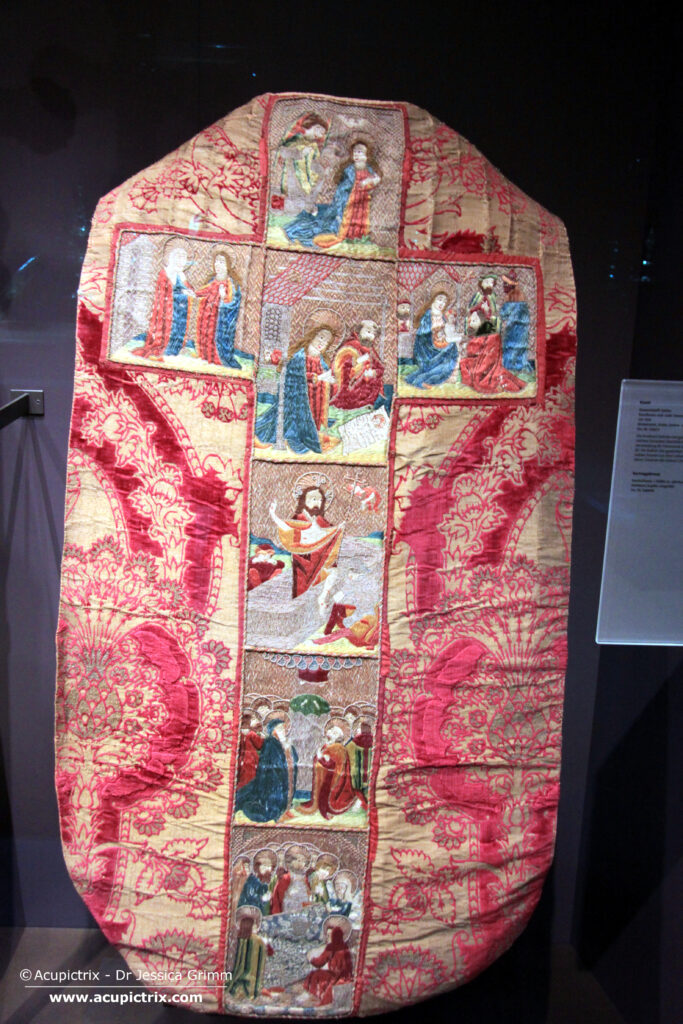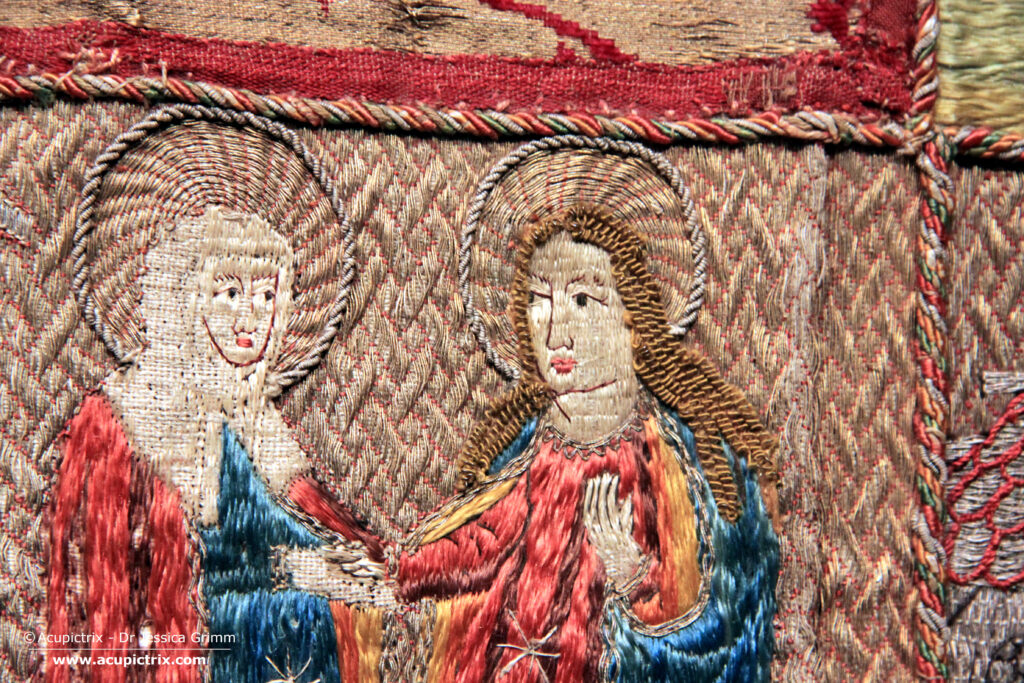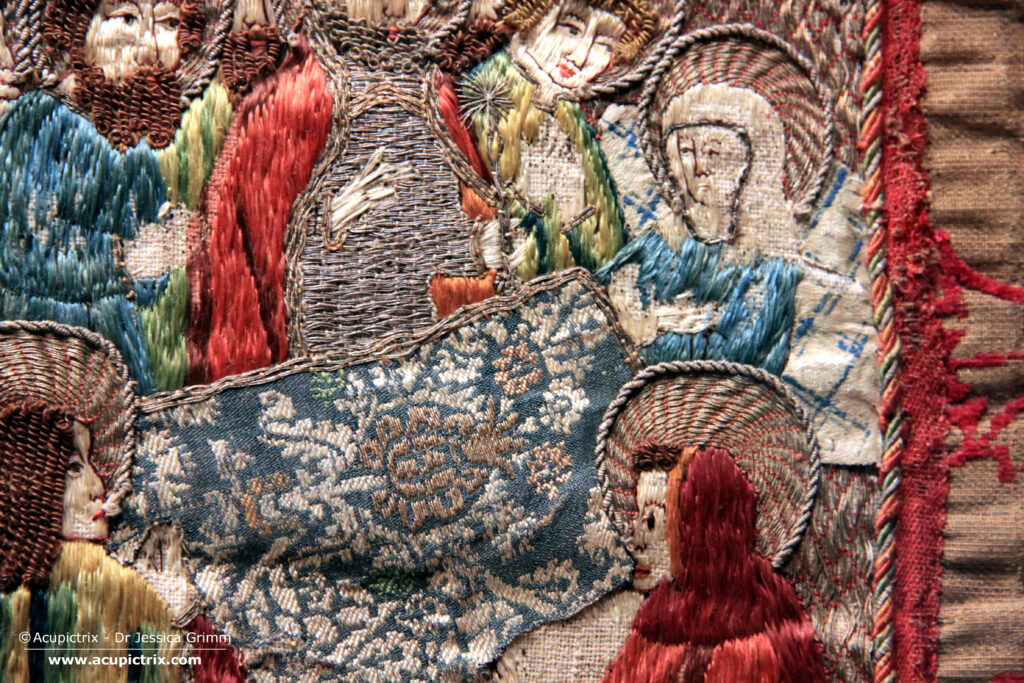After having shown you a chasuble cross and a chasuble with outstanding medieval stumpwork, you might feel a little disappointed with this week’s chasuble from Domschatz Fritzlar. Although perhaps not immediately apparent, the embroidery, likely made around AD 1500 in Germany, is actually quite unique. It combines mass-produced standardised design with a few very effective stumpwork techniques. This demonstrates that even mass-produced embroidery can be enhanced to make it more unique. A bit like changing threads and/or colours in an embroidery kit.

The medieval stumpwork embroidery on the chasuble on display at the Domschatz Fritzlar is part of a series of mass-produced chasuble crosses and columns featuring scenes from the Lives of Mary and Jesus. You can read more about this particular iconography in an older blog post.
The scenes are all standardised and would be readily understood by late-medieval onlookers. In this case, we have the Annunciation at the top, the Visitation on the left, the Nativity in the middle and the Adoration of the Magi on the right. Below are the Resurrection, the Ascension, and the Dormition (the death of Mary). Many more scenes belong to this “cycle”. A few can likely be found on the column on the front of the chasuble. Sadly, it is not visible to us, visitors.

By now, you probably wonder where the stump in this medieval stumpwork is. It is in the hair. All the figures with free-flowing hair have hair made of silk-wrapped wire. When you really zoom in, you can even see the glint of the wire shimmering through. The wire has been coiled into ringlets and carefully couched down so that the couching stitches are invisible.
Silk-wrapped wire is rare in medieval embroidery. And it emerges relatively late. The oldest piece I have been able to track down is an orphrey in the Kunstpalast Düsseldorf (Inv. Nr. 8107). It shows the Annunciation with Saint Barbara and Catherine of Alexandria. The hair of the angel is made from silk-wrapped wire. The embroidery dates from the second quarter of the 15th century and was probably made in Nuremberg.

And then there is the blanket on Mary’s bed in the scene of the Dormition. The blanket is an actual piece of patterned silk. It has been appliqued onto the embroidery. This is also a rarely seen technique in medieval stumpwork embroidery. The oldest piece I have been able to track down is a cope in Halberstadt Cathedral Treasury (Inv. Nr. 213). The stumpwork embroidery dates to the 1470s and was probably made in Lower Saxony. In this case, the clothing of the stumpwork figures is made of silk fabric. More often, flesh-coloured silk is used to cover the high-relief faces in medieval stumpwork embroidery.
I hope you have enjoyed looking at this piece of standardised late medieval embroidery. One can only speculate about why these material upgrades were made by the embroiderer or the team of embroiderers. Was this a stepping stone to full-blown medieval stumpwork? Or were these leftover materials from such a medieval stumpwork piece?
